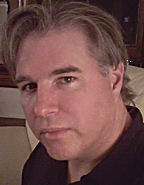I don't know how much more I will post on this topic, but something today caught my attention that I strongly feel warrants discussion. According to a
timeline at MSNBC the second attack by Cho lasted a full thirty-five minues or more. Yes, 35. As in more than one half-hour! Can this really be true? A quick check around the web found a stunningly small selection of timelines. But
Wikipedia does roughly confirm the MSN version of events.
Here are some timeline highlights:
9:15 AM - Second Shooting Incident Begins at Norris Hall (Multiple Sources)
9:25 AM - Students Hear Gun shots (MSNBC Timeline)
9:45 AM - Police Notified of Shooting At Norris Hall (Multiple Sources)
9:50 - 10:00 AM - Cho Ends Massacre Taking His Own Life (Conflicting Sources)
According to the Police and all accounts the shooter was never engaged by Police. Also, according to the Police they were notified of the shootings at 9:45 AM. How is that possible? Are we to believe that it took 30 minutes for a 911 call to be made to the Police? In an age when practically every college student owns a cell phone? This doesn't make any sense. What is even more shocking to me is that no one even seems interested in bringing it up. We know that a good number of students succesfully fled the scene by jumping from the second floor windows of Norris Hall. Didn't any of these students cry for help? Make a call? Attract the attention of other students? We also know that
at least one student recorded gunshots on video (on a cell phone). So we know that at least some of the shots were heard across the campus. Still no one calls Police while this goes no from 9:15 to 9:45?
I admit that I don't have enough facts to draw adequate conclusions. But I am stunned that no one seems to be asking the questions! Here are a few that need answers....
Did Cho really begin shooting at 9:15 AM?
Has anyone independently confirmed the claim by Police that they weren't notified until 9:45?
Do any students have phone records that would refute the notion that the Police weren't notified sooner?
Did the 911 system fail the students in this crisis - were they unable to get through to Police because the lines were jammed?
What Police stations did these 911 phones contact - how does 911 operate on Virginia Tech?
Were the Campus police notified first - and if so, were they notified before 9:45?
It seems to me that far too much attention has been focused on the University's response after the first shooting and the email notifications. Why isn't anyone asking how a gunman can with apparent leisure hunt down victims for over 35 minutes without once encountering any authorities? Are we to believe that not one student contacted the Police for the first 30 minutes of this rampage? It just doesn't add up. What do you think?


